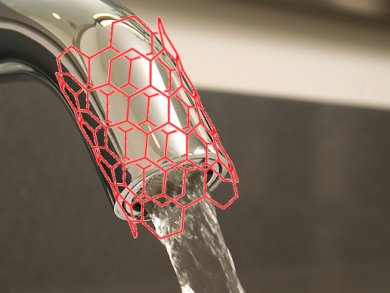Desalination by reverse osmosis requires membranes with pores narrow enough to block the passage of ions yet able to maintain a rapid water flow. The incorporation of carbon nanotubes (CNTs) into semipermeable membranes has been suggested as a possible way of achieving this and idealized CNTs have been the focus of much research.
Ben Corry, University of Western Australia, has used molecular dynamics simulations to examine water and ion transport through functionalized CNTs. The ion rejection and flux of water passing through a range of CNTs with charged or polar functional groups was determined, along with the energy barriers presented to ions and water molecules.
Corry found that addition of charges at the entrance of the pore helps prevent the passage of ions, but any functionalization reduced the flow of water through the membrane. Despite this, the simulations reveal that functionalization of CNTs would create membranes many times better than existing technologies.
- Water and ion transport through functionalised carbon nanotubes: implications for desalination technology
B. Corry,
Energy Environ. Sci. 2011.
DOI: 10.1039/C0EE00481B




